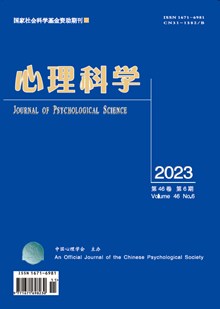Warning refers to a notice or suggestion that reminds and warns others to pay attention to safety and to follow the rules. It is essentially a speech act. Many factors affecting the effectiveness of warnings have been investigated. However, no research has yet examined the influence of language and self-relevance on warnings. Thus, this study chose alertness, pleasure, and compliance as indicators, and conducted two experiments with text modal and image-text modal warnings to investigate the influence of language and self-relevance on the effectiveness of warnings.
In Experiment 1, 30 college students were recruited, and text modal warnings were used as stimuli in a 2 (language: Chinese vs. English) × 2 (self-relevance: high vs. low) within-subjects design, with participants’ scores of alertness, pleasure, and compliance of warnings as the dependent variables. E-Prime 2.0 was applied to compile experimental programs and record experimental data. During the experiment, the stimuli were presented on a 25-inch desktop computer with a screen resolution of 1920×1080 pixels. The screen background was black, and the font color of materials was white. Materials were presented in the center of the screen in 48pt Songti. Participants were required to complete a 7-point rating of alertness, pleasure, and compliance to the warnings. The results of the experiment showed that, for warnings with high self-relevance, there were no differences in the alertness, pleasure, and compliance scores of warnings in Chinese or English (alertness: F(1, 29) = 3.13, p > .05; pleasure: F(1, 29) = 2.41, p > .05; compliance: F(1, 29) = 1.47, p > .05), while for the warnings with low self-relevance, the alertness and compliance scores of warnings in Chinese were higher than those of in English (alertness: F(1, 29) = 15.50, p < .01,ηp2 = .35; compliance: F(1, 29) = 26.87, p < .01, ηp2 = .48), and the score of pleasure is lower than that of in English ( F(1, 29) = 4.51, p < .05, ηp2 = .13).
Experiment 2 also recruited 30 college students. Image-text modal warnings were used as stimuli. The graphic signs corresponding to the text modal warnings in experiment 1 were selected. After Photoshop 20.0.2 software processing, the length and width of graphic signs were 634 and 475 pixels respectively. The screen background was black, and the font color of the text modal warnings was white. The text modal warnings were presented .5 cm below the graphic signs in 48pt Songti. The experimental design and experimental procedure were the same as Experiment 1. The results suggested that compared with low self-relevance warnings, warnings with high self-relevance had higher scores for alertness (F(1, 29) = 13.19, p < .01, ηp2 = .31) and compliance (F(1, 29) = 5.22, p <.05, ηp2 = .15), but not pleasure (F(1, 29) = 1.73, p > .05). In addition, there were no significant differences in alertness, pleasure, and compliance scores for image-text warnings in different language (alertness: F(1, 29) = 3.85, p = .06; pleasure: F(1, 29) = 1.23, p > .05; compliance: F(1, 29) = 3.51, p > .05).
The results of the two experiments indicated that self-relevance influences the cognitive processing of language on the effectiveness of text modal warnings. Moreover, image-text modal warnings are more effective than text modal warning.

